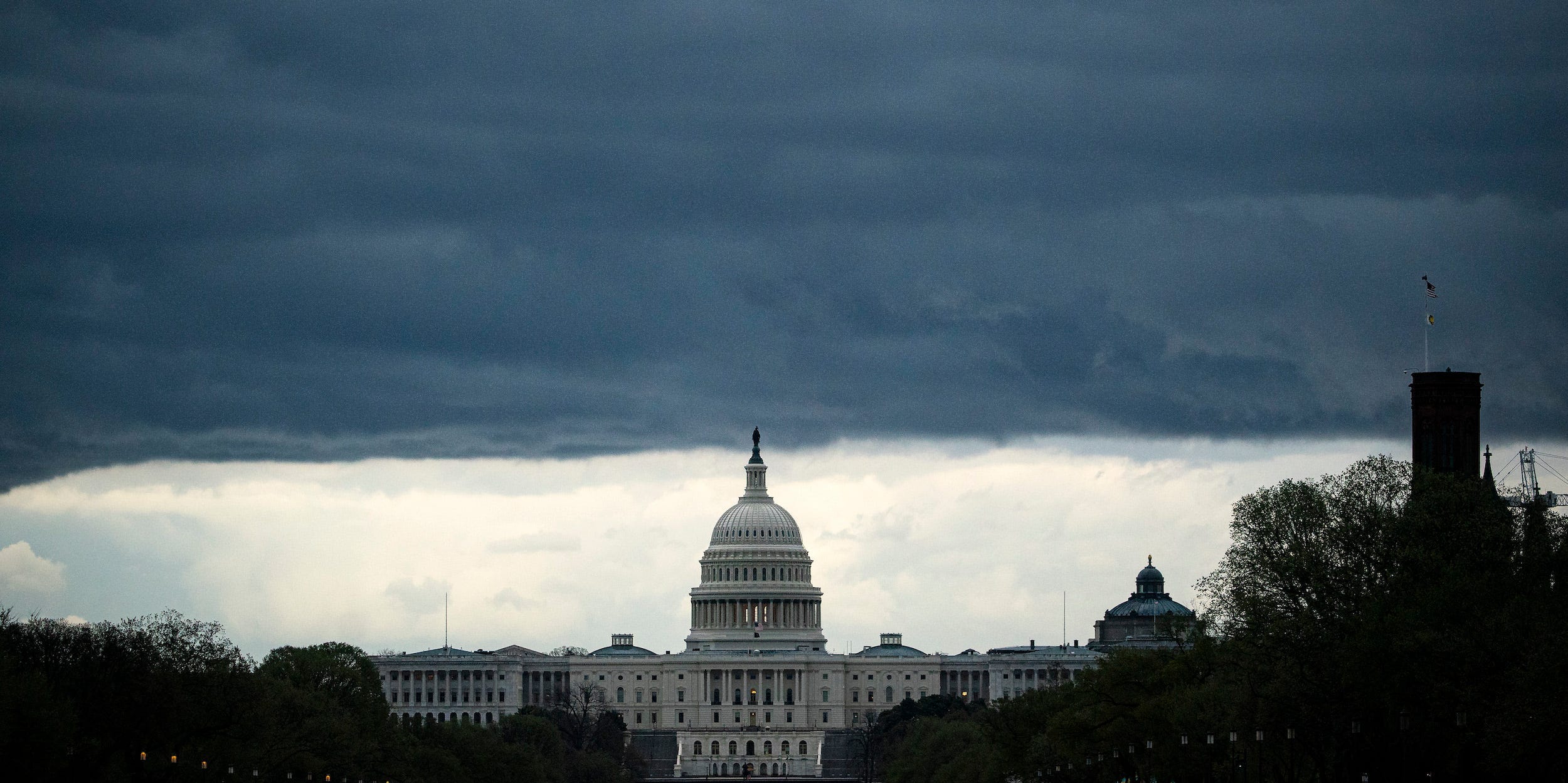
Al Drago/Getty Images
- Watch Treasurys for signs of when the government may have to cut down on its spending, UBS said.
- The bank expects pandemic-era stimulus to lift the national debt to $35 trillion by 2023.
- Congress should "question sustainability" if rising yields boost interest payments, UBS said.
- See more stories on Insider's business page.
The swelling national debt isn't the Biden administration's top priority, and it may not be economists' either. The White House's embrace of big spending has touched off a rampant debate among economists, but in a sign that the debt is yesterday's economic news, inflation is the major point of contention.
But how much debt really is too much? UBS economists are trying to get to the bottom of the matter, and the answer has to do with the Treasurys that have been moving higher in the early months of the Biden era on inflation concerns.
The federal debt ballooned to a record $27.9 trillion last month, up massively from $23.2 trillion at the start of the pandemic. Additional relief measures and President Joe Biden's infrastructure push will only add to the sum. UBS economists expect the balance to reach $35 trillion by the end of 2023.
Debt-service costs might be the best gauge of risk, making Treasury yields the key number to watch, the team led by Seth Carpenter said in a Monday note.
The interest the US pays on its debt is highly correlated with the 10-year Treasury yield, meaning the low yields seen through much of the pandemic alleviated pressure on the US government paying back large sums during a recession. Yet yields have crept higher in recent months as the country moves closer to reopening.
The bank projects that, if the 10-year yield were to rise to 3.4%, the interest-expense-to-GDP ratio would match levels seen during the 1991 peak. The yield currently sits at around 1.7%, but it hit 3.2% as recently as late 2018. Reaching that level wouldn't be cause for panic, but could mark when Congress should pivot to austerity, the team said.
"We take a 10-year yield of around 3.5% as the point where we should begin to question sustainability, not the tipping point," UBS said.
One of the most commonly cited metrics for federal shortfalls is the debt-to-GDP ratio. The Congressional Budget Office forecasted last month that government debt would reach 102% of US GDP by the end of the year even without Democrat's latest stimulus measure.
The gauge is flawed, however, as it compares a standing sum with a yearly output measure that can swing wildly in times of crisis, the bank said.
Policymakers, at least for now, aren't worried. Keeping the economy on track for a full recovery is more important than cutting down on the national debt, Federal Reserve Chair Jerome Powell said in an NPR interview last week. The central bank's plan to hold interest rates near zero ensures the US can service its debt "at this time or in the foreseeable future," he added.
Treasury Secretary Janet Yellen made similar statements in January during her confirmation hearing. The "smartest thing" to do with rates at historic lows is to "act big" and pass new economic relief, the Treasury Secretary told Senators.
